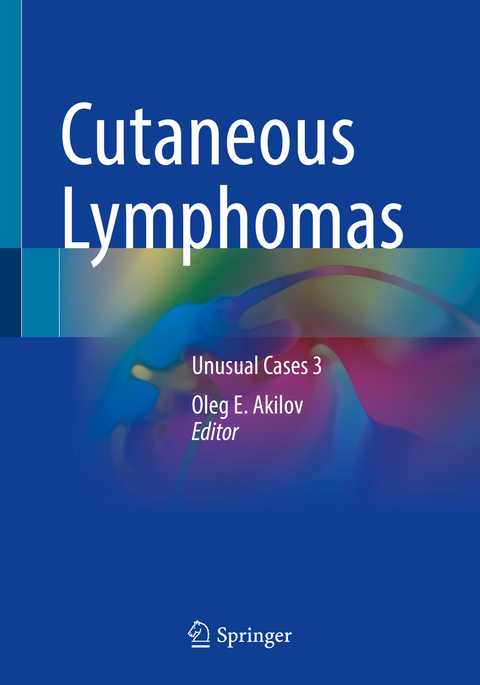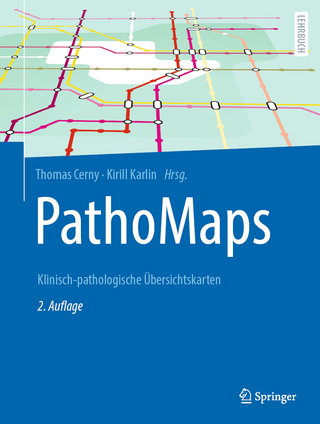
Cutaneous Lymphomas
Springer International Publishing (Verlag)
978-3-030-59131-1 (ISBN)
This book provides a current experience in the diagnostic techniques and treatment approaches available for unusual cutaneous lymphomas. It features concise case-based chapters with a particular emphasis on instances of mature T-cell and NK-cell neoplasms, mature B-cell neoplasms, immature hematopoietic malignancies, and other lymphoproliferative disorders. Clinically-oriented cases emphasize the importance of physical examination along with modern tests of laboratory diagnostics and clinico-pathological correlations.
Cutaneous Lymphomas: Unusual Cases 3 presents a range of difficult and rare cases, which would be uncommon even to the specialists in this field. Therefore, it is a vital reference source for dermatologists, dermatophatologists, cutaneous oncologists, hematooncologists, pathologists, oncologists, and other medical professionals who treat these patients.
Dr. Akilov is an Assistant Professor at the Department of Dermatology and a Director of Cutaneous Lymphoma Program at the University of Pittsburgh. 60% of his time devoted to clinical work when he sees the patient in the outpatient setting as well as a consulting physician for inpatient dermatology cases. Dr. Akilov is a principal investigator on various clinical trials in cutaneous lymphoma. As an independent investigator, Dr. Akilov's research focuses on the pathogenesis of mycosis fungoides and Sézary syndrome, biomarker discovery, and novel therapeutics and is supported by private foundations and pharmaceutical companies. Dr. Akilov is an active national and international teacher giving more than 20 lectures a year. Dr. Akilov serves on the Board of Directors of the United States Cutaneous Lymphoma Consortium. Dr. Akilov authored more than 70 publications in peer-reviewed journals, including around 40 on the subject of cutaneous lymphoma, three book chapters, and more than 200 of conference abstracts and proceedings.
Case 1: Folliculotropic mycosis fungoides with central nervous system involvement.- Case 2: Erythema gyratum repens-like mycosis fungoides with large cell transformation.- Case 3: Eczema molluscatum in a patient with erythrodermic mycosis fungoides.- Case 4: Parakeratosis variegata-like poikilodermatous CD8+ mycosis fungoides.- Case 5: Parakeratosis variegata in a patient with CD8+ mycosis fungoides with post-inflammatory hypopigmentation.- Case 6: Poikilodermatous mycosis fungoides.- Case 7: Tumor mycosis fungoides with xanthomatized atypical lymphocytes.- Case 8: CD20+ mycosis fungoides partially responsive to rituximab.- Case 9: Chronic lymphocytic inflammation with pontine perivascular enhancement responsive to steroids (CLIPPERS) in a patient with granulomatous mycosis fungoides and multiple tumors.- Case 10. Folliculotropic mycosis fungoides with exuberant neutrophil-rich scale and follicular plugging mimicking hypertrophic actinic keratosis.- Case 11. Small plaque parapsoriasis-like mycosis fungoides.- Case 12. Extragenital lichen sclerosus et atrophicans mimicking hypopigmented mycosis fungoides.- Case 13: T-cell-rich angiomatoid polypoid pseudloymphoma (TRAPP) of the skin.- Case 14. Pustular Sezary syndrome.- Case 15. De novo expression of CD26 on Sezary cells as an indicator of the disease progression in a patient with Sezary syndrome.- Case 16. Sezary syndrome presenting with papuloerythroderma of Ofuji and leonine facies.- Case 17. Mycosis fungoides-like presentation of primary cutaneous anaplastic large cell lymphoma.- Case 18. Anaplastic lymphoma kinase-positive primary cutaneous anaplastic large cell lymphoma.- Case 19. Successful treatment of primary cutaneous anaplastic large cell lymphoma on the penile shaft with brentuximab vedotin and allogenic stem cell transplant.- Case 20. Lymphomatoid papulosis type D in a child with CD8+ hypopigmented mycosis fungoides.- Case 21. Lymphomatoid papulosis and autoimmunity.- Case 22. Infusion-related CD30-positive lymphomatoid drug eruption secondary to melphalan.- Case 23. Arthropod reaction with CD30 positive infiltrate and ulceration mimicking CD30 lymphoproliferative disorder.- Case 24: Extranodal NK/T-cell lymphoma, nasal type.- Case 25. EBV-associated extranodal NK/T-cell lymphoma with Gamma/d TCR expression presented as aphthous stomatitis.- Case 26. Extranodal NK/T-cell lymphoma, extra-nasal type.- Case 27: Disseminated extranodal NK/T-cell lymphoma.- Case 28. Primary cutaneous Gammad T-cell lymphoma with mycosis fungoides-like plaques.- Case 29. Indolent primary cutaneous d T-cell lymphoma mimicking mycosis fungoides.- Case 30. Primary cutaneous Gammad T-cell lymphoma with poor response to the therapy.- Case 31. Primary cutaneous unilateral non-cytotoxic d T-cell lymphoma slowly progressing into tumors.- Case 32. Primary cutaneous Gammad T cell lymphoma with panniculitis-like presentation.- Case 33: Primary cutaneous aggressive epidermotropic CD8-positive T-cell lymphoma with initial protracted course.- Case 34. Primary cutaneous aggressive epidermotropic T-cell lymphoma (PC-AETCL) with an aberrant immune phenotype.- Case 35. CD8+ T-cell lymphoma with cytotoxic phenotype.- Case 36. Primary cutaneous aggressive epidermotropic T-cell lymphoma as a composite lymphoma with B-cell chronic lymphocytic leukemia.- Case 37: Primary cutaneous aggressive epidermotropic CD8+ cytotoxic T-cell lymphoma with bullous manifestation.- Case 38. Leukemoid reaction mimicking aggressive epidermotropic CD8+ T-cell lymphoma.- Case 39. Cutaneous relapse of peripheral T-cell lymphoma, NOS by extension.- Case 40. Generalized lymphadenopathy and poikiloderma due to prolonged interferon-beta-1b therapy misdiagnosed as peripheral T-cell lymphoma.- Case 41: Adult T-Cell Leukemia/Lymphoma.- Case 42. Cutaneous Epstein-Barr Virus post-transplant lymphoproliferative disorder.- Case 43. Primary cutaneous CD30 T-cell posttransplant lymphoproliferative disorder with d expression.- Case 44. Primary cutaneous marginal zone lymphoma presented as facial patches unresponsive to rituximab.- Case 45. Primary cutaneous diffuse large B-cell lymphoma, leg type presenting on the scalp.- Case 46. Bruise-like nodules of blastic plasmacytoid dendritic cell neoplasm on the background of diffuse petechiae.- Case 47: Blastic plasmacytoid dendritic cell neoplasm presented with deep purple nodules.- Case 48: A solitary nodule of blastic plasmacytoid dendritic cell neoplasm in a young patient.- Case 49. A relapse of T-cell large granular lymphocytic (LGL) leukemia with chronic NK lymphocytosis in the skin.- Case 50. Indeterminate dendritic cell histiocytosis.- Case 51. A unique presentation of hemophagocytic lymphohistiocytosis with ulcerating papulonodules.
| Erscheinungsdatum | 04.04.2022 |
|---|---|
| Zusatzinfo | XVII, 127 p. 309 illus., 301 illus. in color. |
| Verlagsort | Cham |
| Sprache | englisch |
| Maße | 178 x 254 mm |
| Gewicht | 294 g |
| Themenwelt | Medizin / Pharmazie ► Medizinische Fachgebiete ► Dermatologie |
| Medizin / Pharmazie ► Medizinische Fachgebiete ► Onkologie | |
| Studium ► 2. Studienabschnitt (Klinik) ► Pathologie | |
| Schlagworte | B-cell neoplasm • Clinical and laboratory diagnostics • Clinical Cases • Cutaneous oncology • Dermatology • Dermatopathology • Differential diagnostics • Hematopoetic malignancies • Immature Hematopoietic Malignancies • Lymphoproliferative Disorders • mycosis fungoides • Sezary syndrome • T-cell neoplasm |
| ISBN-10 | 3-030-59131-X / 303059131X |
| ISBN-13 | 978-3-030-59131-1 / 9783030591311 |
| Zustand | Neuware |
| Haben Sie eine Frage zum Produkt? |
aus dem Bereich


